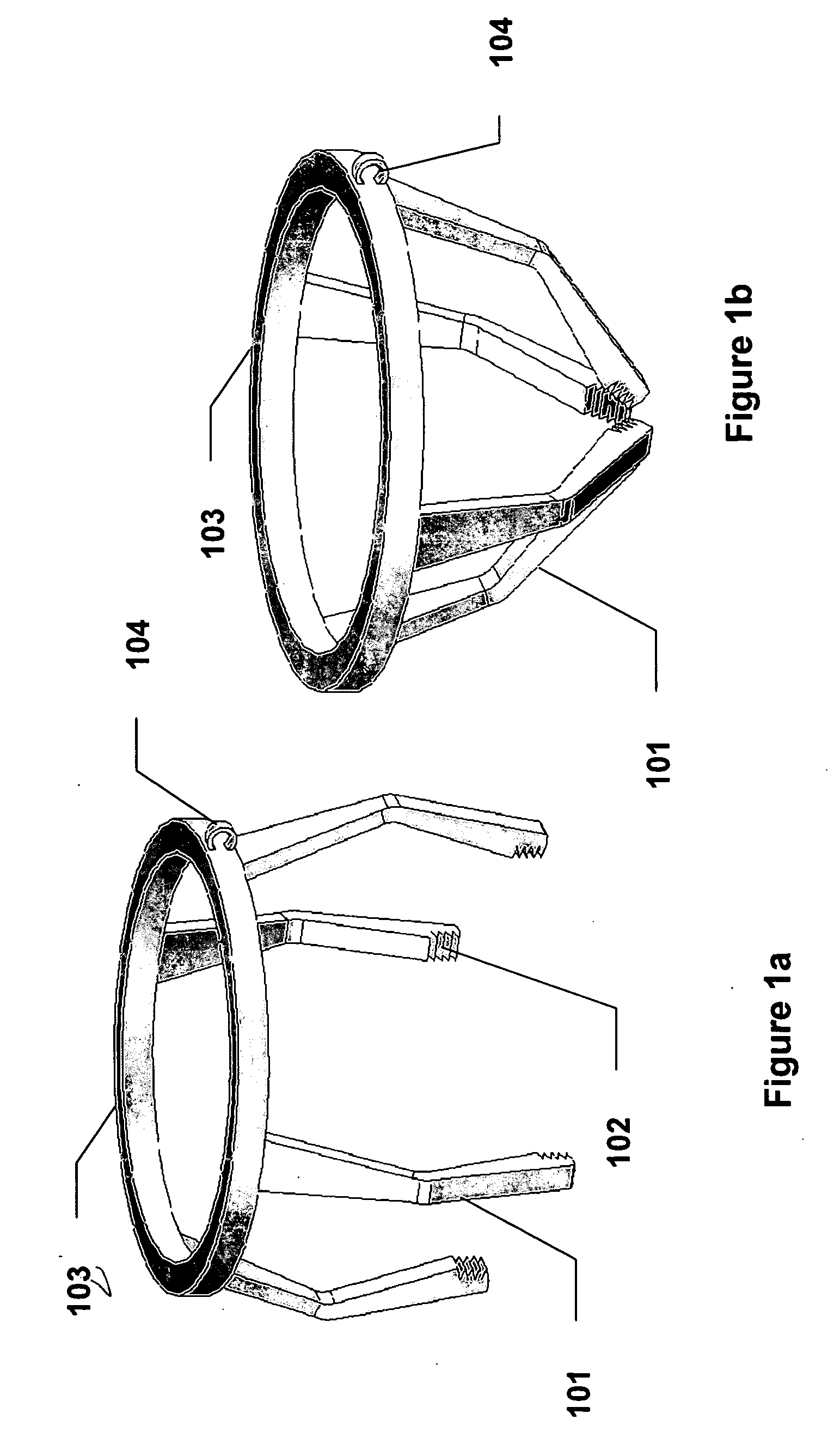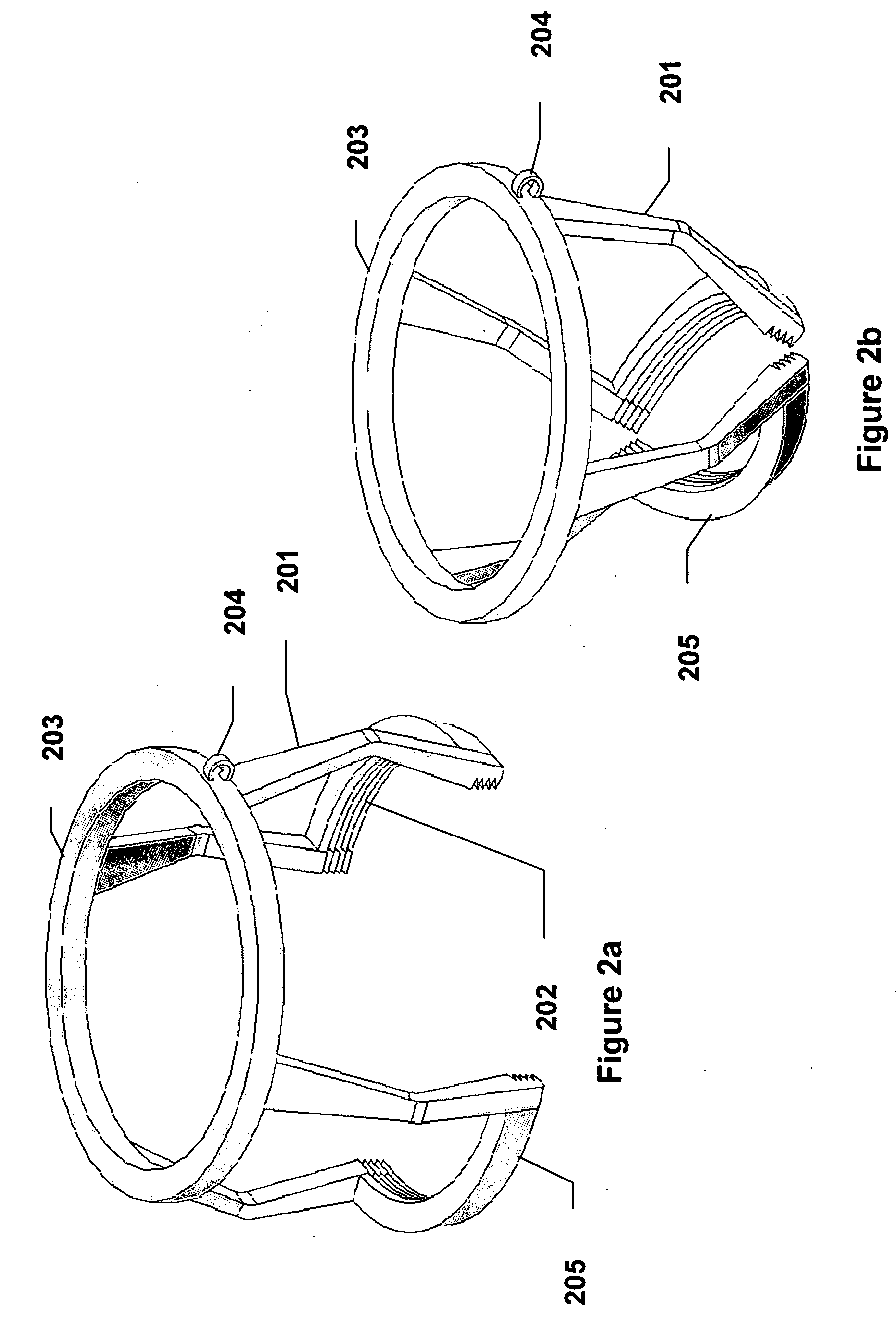Vascular closure methods and apparatuses
a technology of vascular closure and vascular valve, which is applied in the field of vascular closure methods and apparatuses, can solve the problems of high rate of post-puncture hemorrhage, large number of steps needed, and considerable complications, and achieves low shear force, reduced the chance of thrombosis or intimal hyperplasia, and little endothelial disruption
- Summary
- Abstract
- Description
- Claims
- Application Information
AI Technical Summary
Benefits of technology
Problems solved by technology
Method used
Image
Examples
Embodiment Construction
[0026] The present invention provides apparatuses and methods for closing a vascular puncture wound or any tissue aperture, for example those resulting from the insertion of a vascular catheter or surgical instrument, trauma or disease. The present invention embraces both apparatuses and methods for closing tissue openings such as vascular punctures. Devices according to the present invention can be open on a delivery sheath and when pushed off the sheath assume a closed position. This behavior can be provided by forming at least a portion of the device of a memory metal or material. The stress free state corresponds to the state at which the apparatus has closed upon the everted edges of a puncture wound of a blood vessel, and the stressed state is when the device is open and seated on the delivery sheath. Example embodiments of tissue closure apposition devices according to the present invention are shown in FIGS. 1, 2, 3, and 4. The descriptions may refer to “vessels” for conveni...
PUM
 Login to View More
Login to View More Abstract
Description
Claims
Application Information
 Login to View More
Login to View More - R&D
- Intellectual Property
- Life Sciences
- Materials
- Tech Scout
- Unparalleled Data Quality
- Higher Quality Content
- 60% Fewer Hallucinations
Browse by: Latest US Patents, China's latest patents, Technical Efficacy Thesaurus, Application Domain, Technology Topic, Popular Technical Reports.
© 2025 PatSnap. All rights reserved.Legal|Privacy policy|Modern Slavery Act Transparency Statement|Sitemap|About US| Contact US: help@patsnap.com



